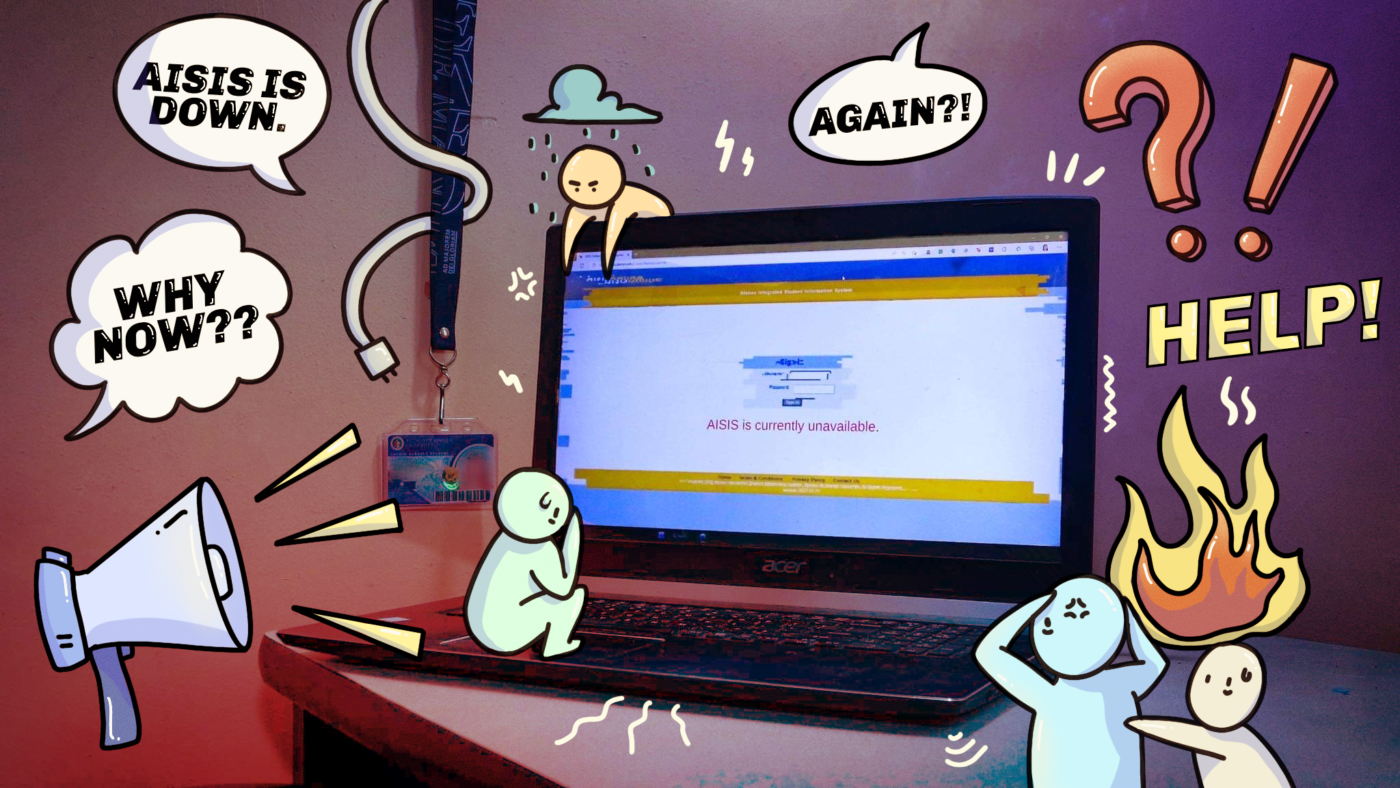PRIOR TO the existence of the Ateneo Integrated Student Information System (AISIS), Ateneans had to line up and enlist in the department of their preferred class. Then, enlistment days witnessed students running from one department to another, manually verifying the availability of classes, and hustling around campus to ensure that they met the required number of classes for the upcoming semester.
Thus, the introduction of AISIS in 2005 ushered in a more efficient enlistment process for students. Since its inception, the website has undergone several revamps and updates to better accommodate students during the enlistment season.
However, reports of website crashes, enlistment glitches, and technical difficulties in recent years have raised questions about AISIS’ seeming difficulty in keeping up with the demands of modern times.
Manual woes
During the enlistment for the first semester of AY 2020–2021, given the transition to online classes, issues with AISIS caused an influx of load revision requests.
Likewise, the return of onsite classes this school year witnessed the addition of online class options and substantial difficulties for students during the enlistment period for the first semester of AY 2022-2023.
Joachim Regalado (5 BSM AMF), already in his fifth year enlisting, shared that “not much has changed” with regard to the enlistment process using AISIS. As a fifth-year student, he has experienced manually registering onsite and online.
During his second year, he spent “about four hours” in the Matteo Ricci library to manually enlist for his classes. This was in contrast to the convenience of online registration, where he can enlist from the comfort of his home. In this remote version, his load revision experience was “easier” compared to his onsite experience as the digitized process of using the load revision website and submitting a request online made it quicker.
The Office of the Registrar has similarly done its part to ease students’ burden, having improved its services over the years, according to Regalado. For example, two weeks of waiting were cut down to two days with regard to the load revision requests.
Despite these strides forward, however, there remains a litany of systemic issues that trouble Ateneans during the enlistment period.
One of these is the limited number of slots allotted by departments, leading students to undergo the tedious load revision process after the prescribed enlistment period. For Regalado, this issue has constantly occurred since his first year.
In light of this, Regalado thinks that an even distribution of batches during the enlistment period—similar to TALAB’s own enlistment system—will benefit all parties.
“There are four batches [in the TALAB system]. Let’s say it’s a hundred slots. So, [in the current system] if you’re batch one, all 100 slots are available to you. So, people are asking why can’t they do that [TALAB system] for AISIS?” Regalado asks.
Ultimately, he highlighted that the professors and the class sections that a student can secure during enlistment play a huge role in their grade. Thus, fixing AISIS malfunctions along with the registration process itself is integral to Loyola Schools (LS) students’ academic experience.
Two-decade-old system
While the enlistment process has been known to be ever-changing, the existence of AISIS has remained constant since the 2000s.
The first version of AISIS was already in the works in 1998, yet it was only integrated into the enlistment process in 2002. At that time, AISIS was only available via Intranet, a private network only available within a limited area, which meant that students still had to wait in line to utilize the computers within the campus.
This posed great challenges in maximizing efficiency. Thus, random number assignments were implemented soon after to manage both the foot and digital traffic that came with the process.
Three years after its debut, AISIS version 1.0 was enhanced into 2.0. By then, students were able to access the system from the comfort of their homes with the help of the Internet.
Various features were also incorporated into the system, including evaluating professors and viewing a student’s class schedule, the individual program of study, and grades.
Although little to no changes to the overall interface of AISIS were made, there were some developments implemented in the other aspects of enlistment. For one, the number of random batches was minimized from four to two in 2012 to address concerns regarding the luck-based system, which students deemed to be unfair.
Another improvement was made in 2021 when AISIS was transferred to a cloud-based system. This shift lessened issues with AISIS access during power and technical interruptions.
However, beyond these technological advancements also exists a more humane side of enlistment.
In particular, the Office of the Registrar was placed in charge of the blocking of students, the pre-enlisted schedules of first-year and second-year students, and Load Revision requests. Meanwhile, the Office of Management Information Systems became responsible for the random batch generation and the maintenance of the AISIS website.
“The registration is actually… a shared effort between all academic departments, [the] MIS office, ADAA, Central Accounting Office, Cashier, and my office,” then-LS Registrar Joaquin Agtarap explained in a previous story for The GUIDON.
A digitized era
With the complexity of the enlistment process, there persist concerns of the LS students that have yet to be resolved to this day.
This concern echoes the sentiments of many LS students and resulted in a number of student-led initiatives including the creation of the Ateneo Profs to Pick group and AISIS mirror websites.
The Ateneo Profs to Pick group was created for students to share their experiences with certain professors and subjects so that others may glean a better understanding of what to expect. AISIS mirror websites, on the other hand, aim to assist students by giving them an alternative site to look at the availability of slots during the enlistment period when AISIS is inaccessible for some students.
However, these are only stopgap measures that further highlight the urgency of the situation. Nonetheless, the efforts of the LS offices in the development of both AISIS and the enlistment process throughout the years remind the students that they are not alone in their pursuit.
As then-Ateneo Registration Committee Public Relations Officer Lorenzo Bitong said in a previous story, “With […] thousands upon thousands of students, it’s very hard. It’s even outside OMIS’ control that AISIS and the load revision site would have lags, delays, and even crashes. But […] we can push for those concerns to be alleviated, so they are no longer a concern to begin with.”
Although much can still be worked on, its digitalization served as a major turning point and the beckoning of a new era. The shutdown of the AISIS Online Portal precedes the beginning of a revamped AISIS system that can better serve the LS community in an era of a digitized Ateneo.







